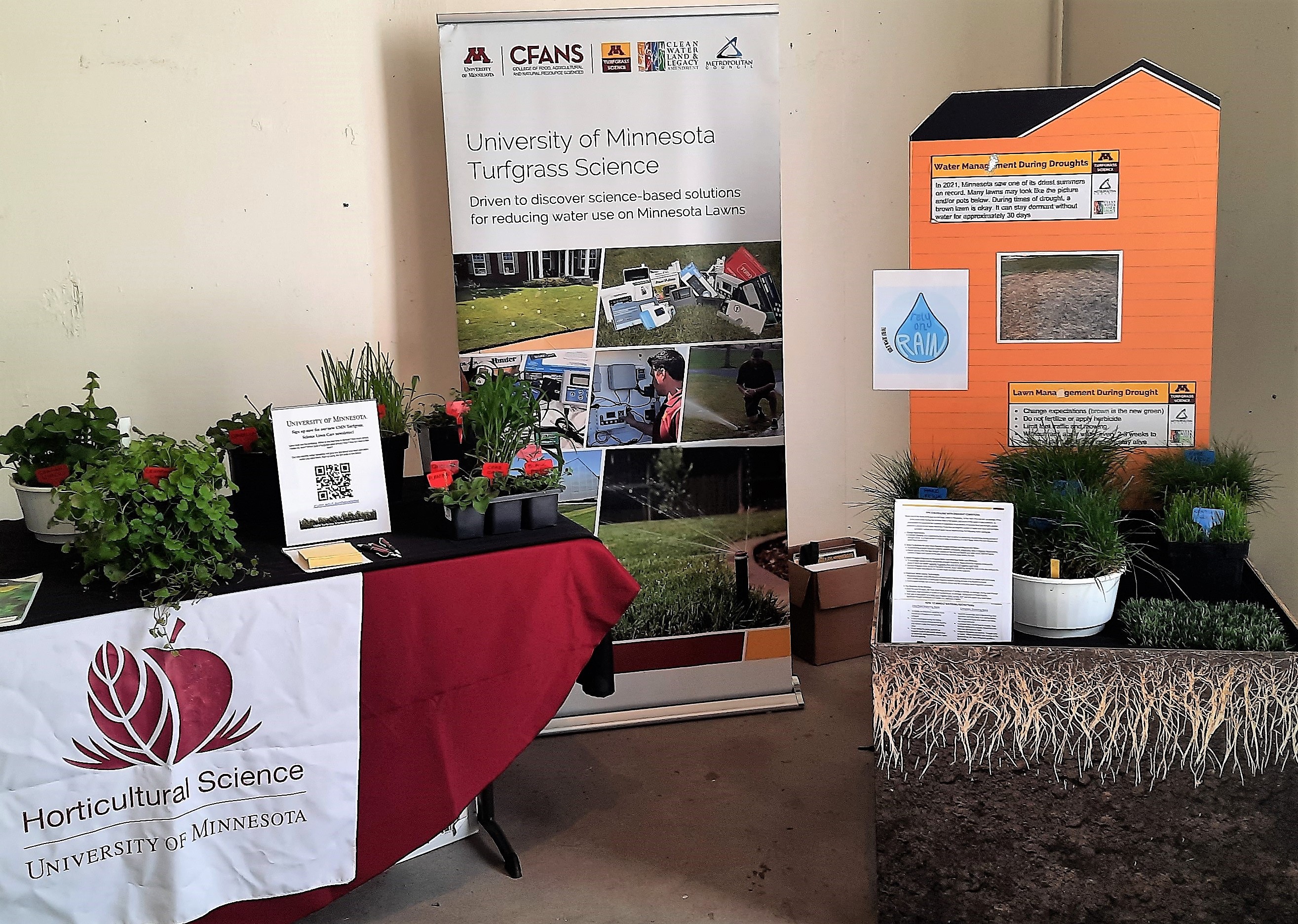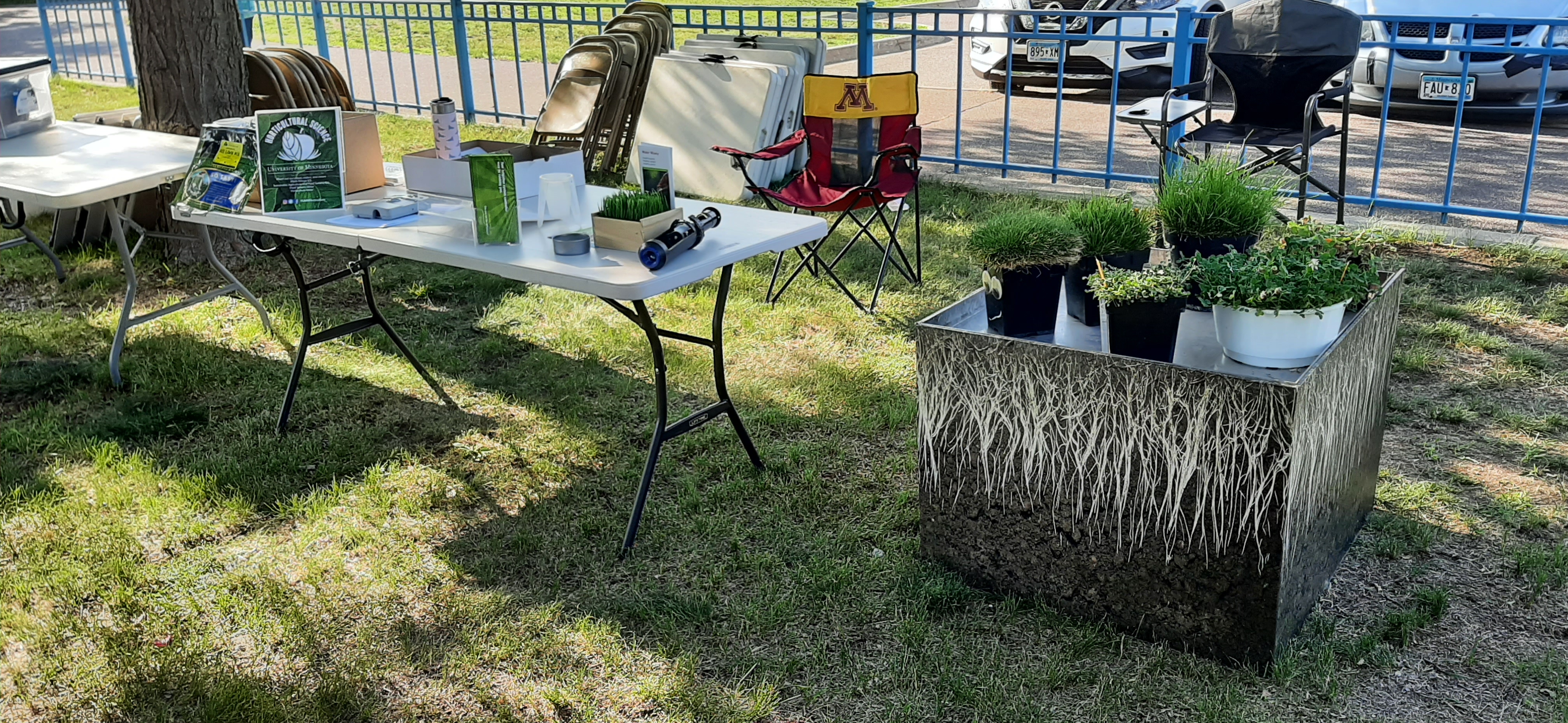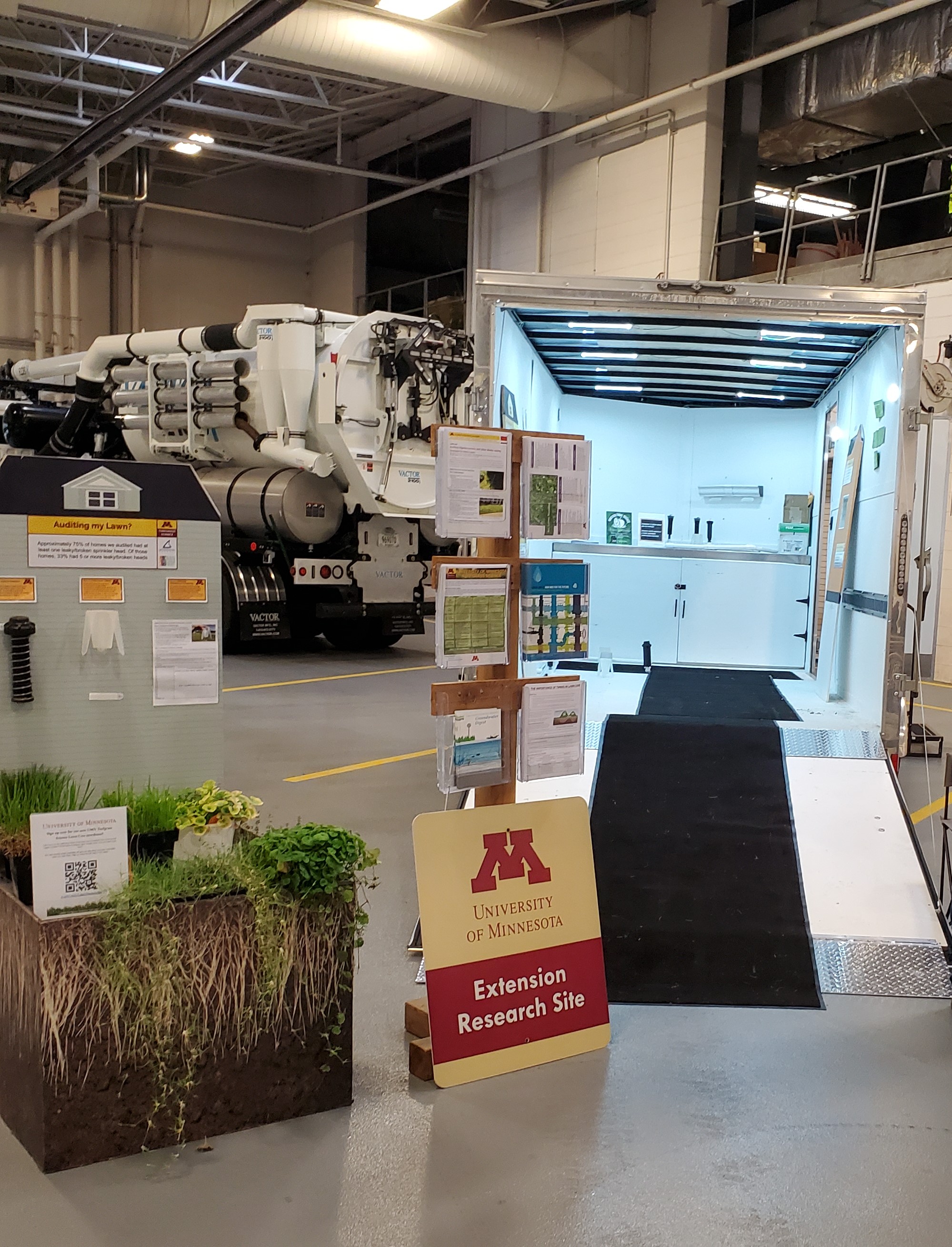
Gary Deters
UMN Turfgrass Team at Anoka County Extension Master Gardeners' Home Landscaping and Garden Fair!

On Saturday, April 1, 2023 from 8:00 a.m.
UMN Turfgrass Team at Rosemount Home & Business Expo!

On Saturday, March 18, 2023 from 9:30 a.m. to 1:30 p.m., the city of Rosemount is holding a Home & Business Expo (Rosemount Community Center Gym, 13885 S. Robert Trail, Rosemount, MN).
Gary Deters takes on a New Role
By Eric Watkins
We are excited to announce that Gary Deters will be our new lawn water conservation educator! Gary, who spent 23 years in golf course turf management, six of those years as a superintendent at St. Cloud Country Club, has been our field facility manager since March 2020. Gary has been an excellent addition to our team, ensuring that our research plots are maintained well, and experimental treatments are applied carefully and consistently.
Does rolling greens following a contact fungicide application affect results?
By Gary Deters
Over the last two seasons we have been researching if rolling greens post contact fungicide application affects the efficacy and effectiveness of the fungicide. The results of the trial could possibly take out the guesswork and allow golf course superintendents to make confident decisions. Rolling greens (Figure 1) is a cultural practice golf course superintendents use to help increase green speeds, remove dew, and promote smoothness of the putting surface.
University of Minnesota Turfgrass team in the media – 6/2/2022
Check out our team’s latest efforts in educating the public about our work. Several articles from the UMN Turfgrass Science team was featured in the latest edition of the MGCSA's Hole Notes publication.
See the May 2022 edition of Hole Notes for:
Evaluating fine fescues for golf greens in cold climates
By Gary Deters and Eric Watkins
This article was originally published on the Low Input Turf Using Fine Fescues blog.
An old mower to the rescue
By Gary Deters
Like most turfgrass areas, a high percentage of our research plots need to be mowed consistently. Our creeping bentgrass research golf greens are cut at 0.125” and the task requires a special mower and reel setup. Many plots are cut at 2.5” to 3.5” with a push or riding mower, similar to what is used by a typical homeowner. So, with all the research plots and mowers we have, you might think we have everything we need to get the job done. In most cases that is true, but for a new trial conducted by members of the turf group, we had a bit of a problem.
